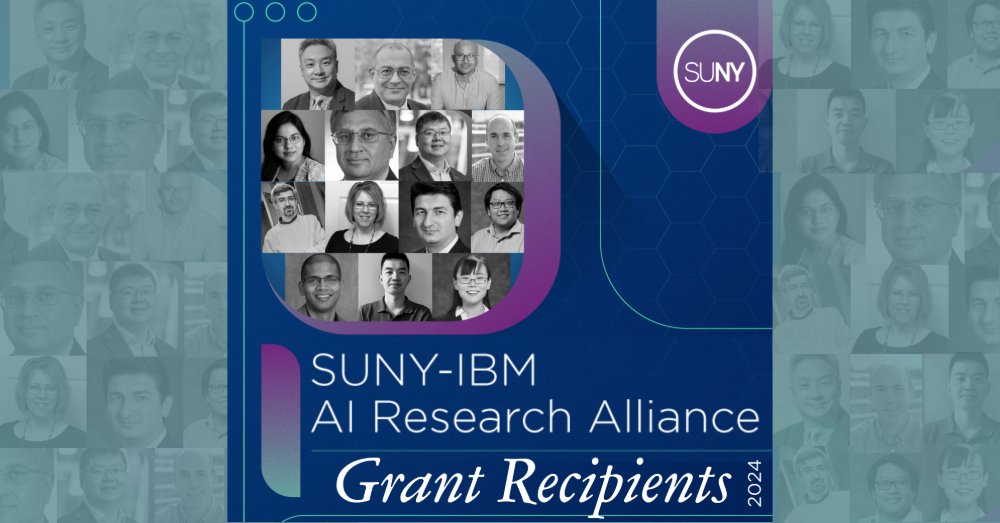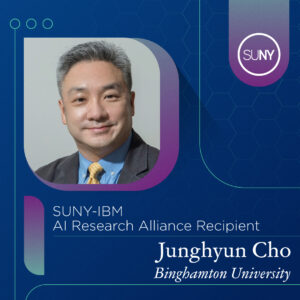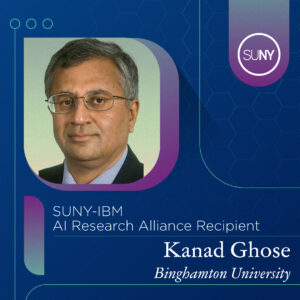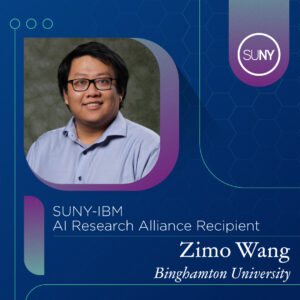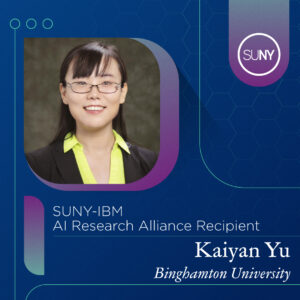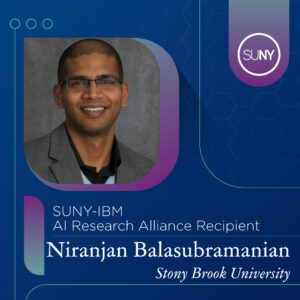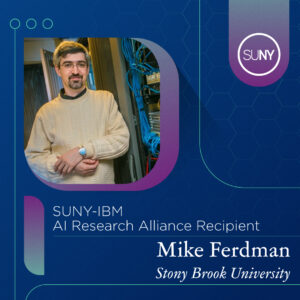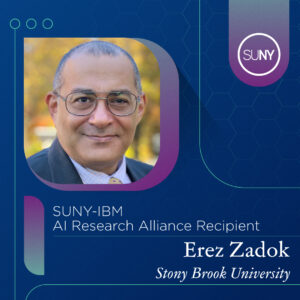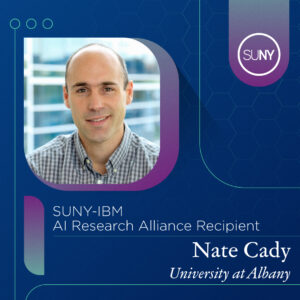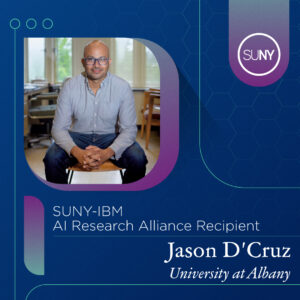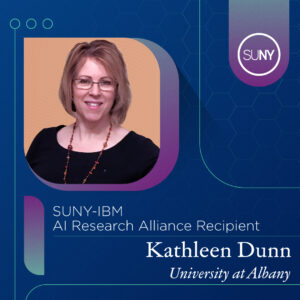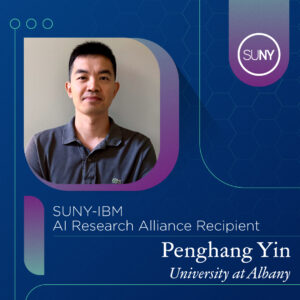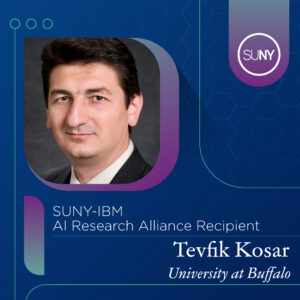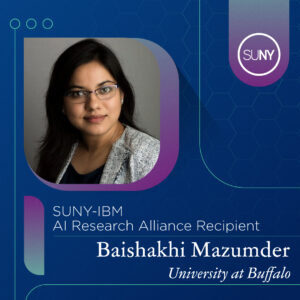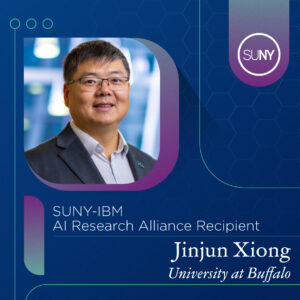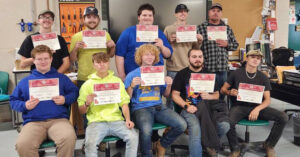Reading Time: 4 min 36 sec
Nestled in the hum of lab spaces and nanofabrication facilities across New York State, fourteen faculty researchers from the State University of New York are suited up in clean-room scrubs or competing with noisy ventilation systems as they search for answers in collaboration with top industry leader, IBM. These experts are pushing the limits to crack open the next wave of cutting-edge breakthroughs in artificial intelligence (AI), microelectronics, and quantum computing.
Innovations in AI Technology for Sustainable Development
Stating that AI research has been around for a few decades would be an understatement. The concept of artificial intelligence has piqued curiosity for over a century. Still, the current race for advancing technology is reaching a fever pitch as economic growth, consumer demand, energy efficiency, national and personal security, and equity and trustworthiness are on the line. Just this year, the Noble Prize in Physics was awarded to two Physicists for their pioneering A.I. research they performed decades ago.
According to Gina Raimondo, U.S. Secretary of Commerce, “AI is the defining technology of our generation.” Case in point, as reported by Grand View Research, “AI is expected to see an annual growth rate of 37.3% from 2023 to 2030.” (Forbes Advisor, June 15, 2024)
In anticipation of this AI tech boom, SUNY, IBM, and New York State, joined forces and created a research hub — the SUNY-IBM AI Collaborative Research Alliance to advance the next-generation in AI technology and tackle how AI should be used for the common good. The program has launched twenty-two projects so far, with ten new projects added to four already underway from previous years. These outstanding faculty researchers from SUNY’s four university centers; Binghamton University, Stony Brook University, University at Albany, and University at Buffalo, are grappling with today’s toughest challenges in advancing AI technology.
SUNY’s Role in Advancing AI Research
From progressing AI hardware, software applications, cloud capabilities, energy consumption, and the ethical conundrums AI poses, these are just some of the problems these top minds are trying to solve.
“Basic science is fun, of course, but it’s even more rewarding to see that knowledge put into practice to improve our shared world.” – Kathleen Dunn, Professor, College of Nanotechnology, Science, and Engineering and 2024 SUNY-IBM Alliance grant recipient.
With the amount of energy AI hardware and software use, solving this problem of efficiency and climate impact is urgent.
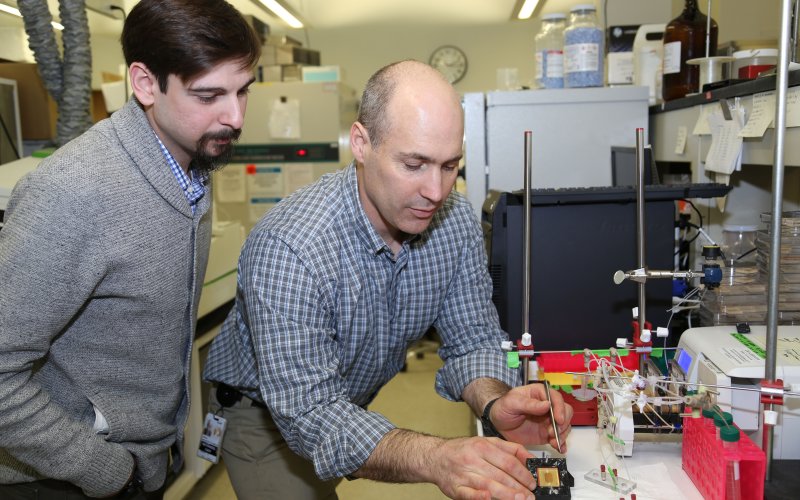 As a biologist turned engineer, Nate Cady, Associate Dean for Research, and Professor at the University at Albany’s College of Nanotechnology, Science, and Engineering pulls inspiration from the way nature has solved engineering problems through evolution. “Artificial intelligence is a powerful tool, but training and operating AI platforms are incredibly costly, both in energy consumption and computing power. This research seeks to mimic some of the functionality of the human brain and leverage that functionality for improving electronic computing.” Working with IBM, Professor Cady, and his team aim to develop a new type of memory device that functions similarly to a synapse in the human brain to make AI more efficient by reducing the energy it takes to enable a more powerful AI system.
As a biologist turned engineer, Nate Cady, Associate Dean for Research, and Professor at the University at Albany’s College of Nanotechnology, Science, and Engineering pulls inspiration from the way nature has solved engineering problems through evolution. “Artificial intelligence is a powerful tool, but training and operating AI platforms are incredibly costly, both in energy consumption and computing power. This research seeks to mimic some of the functionality of the human brain and leverage that functionality for improving electronic computing.” Working with IBM, Professor Cady, and his team aim to develop a new type of memory device that functions similarly to a synapse in the human brain to make AI more efficient by reducing the energy it takes to enable a more powerful AI system.
 Tevfik Kosar, a Professor in the Department of Computer Science and Engineering at the University of Buffalo is exploring how to decrease the negative environmental impacts of AI workloads. “According to some estimates, AI workloads will be responsible for 14% of the world’s total carbon emissions by 2040. For this reason, we wanted to leverage our extensive experience and prior work in green and sustainable computing. This [Koser’s] project seeks to significantly decrease energy consumption, and the carbon footprint associated with large-scale distributed AI workloads.”
Tevfik Kosar, a Professor in the Department of Computer Science and Engineering at the University of Buffalo is exploring how to decrease the negative environmental impacts of AI workloads. “According to some estimates, AI workloads will be responsible for 14% of the world’s total carbon emissions by 2040. For this reason, we wanted to leverage our extensive experience and prior work in green and sustainable computing. This [Koser’s] project seeks to significantly decrease energy consumption, and the carbon footprint associated with large-scale distributed AI workloads.”
In the world of technology, making it smaller and faster is expected, but how does that happen?
 “To satisfy the high computing demands of Artificial Intelligence (AI), we need to pack more functionality onto computer chips,” says Professor Kathleen Dunn, from the University at Albany. That is what she and Professor Junghyun Cho from Binghamton University are investigating in two separate projects.
“To satisfy the high computing demands of Artificial Intelligence (AI), we need to pack more functionality onto computer chips,” says Professor Kathleen Dunn, from the University at Albany. That is what she and Professor Junghyun Cho from Binghamton University are investigating in two separate projects.
Having spent over twenty years studying the placement and types of atoms in advanced materials, Dunn is now working on how to maximize the tiny real estate inside our technology. “My project examines the quality of the bonding at the atomic level. To bond wafers, chips, or chiplets together, to stack more capacity in the same lateral footprint, the logical answer is to go up.” And to go up, Kathy’s project is figuring out how to improve bonding to best do that.
 Professor Cho’s research “focuses on the 3D stacking of semiconductor chips through various vertical interconnections. The research team from Binghamton University and IBM aims to uncover the controlling mechanisms behind Cu-Cu [copper] bonding during the post-annealing phase of hybrid bonding.” This is in hopes of forming a strong bond between materials to enhance chip performance.
Professor Cho’s research “focuses on the 3D stacking of semiconductor chips through various vertical interconnections. The research team from Binghamton University and IBM aims to uncover the controlling mechanisms behind Cu-Cu [copper] bonding during the post-annealing phase of hybrid bonding.” This is in hopes of forming a strong bond between materials to enhance chip performance.
Like all rigorous scientific research, it takes time to solve these complicated problems, especially when it comes to securing privacy and ensuring trustworthiness.
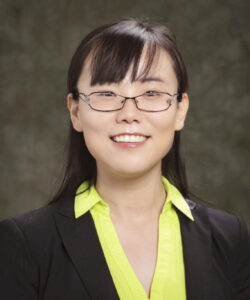 Binghamton University’s Assistant Professor in Systems Science and Industrial Engineering, Kaiyan Yu‘s project is entering its third year in the AI-Alliance program. The broadly-applicable computing platform can use data in healthcare or engineering while protecting sensitive and private information. This type of data is “notoriously difficult to analyze due to its complexity… The idea of developing a cutting-edge, privacy-preserving solution that could revolutionize how we handle and learn from functional data,” is what drew Kaiyan to this research.
Binghamton University’s Assistant Professor in Systems Science and Industrial Engineering, Kaiyan Yu‘s project is entering its third year in the AI-Alliance program. The broadly-applicable computing platform can use data in healthcare or engineering while protecting sensitive and private information. This type of data is “notoriously difficult to analyze due to its complexity… The idea of developing a cutting-edge, privacy-preserving solution that could revolutionize how we handle and learn from functional data,” is what drew Kaiyan to this research.
Improving and enhancing the capabilities of this technology are all pieces of optimizing AI systems and solutions. It is also vital that the success of AI must include how it will be used for the public good.
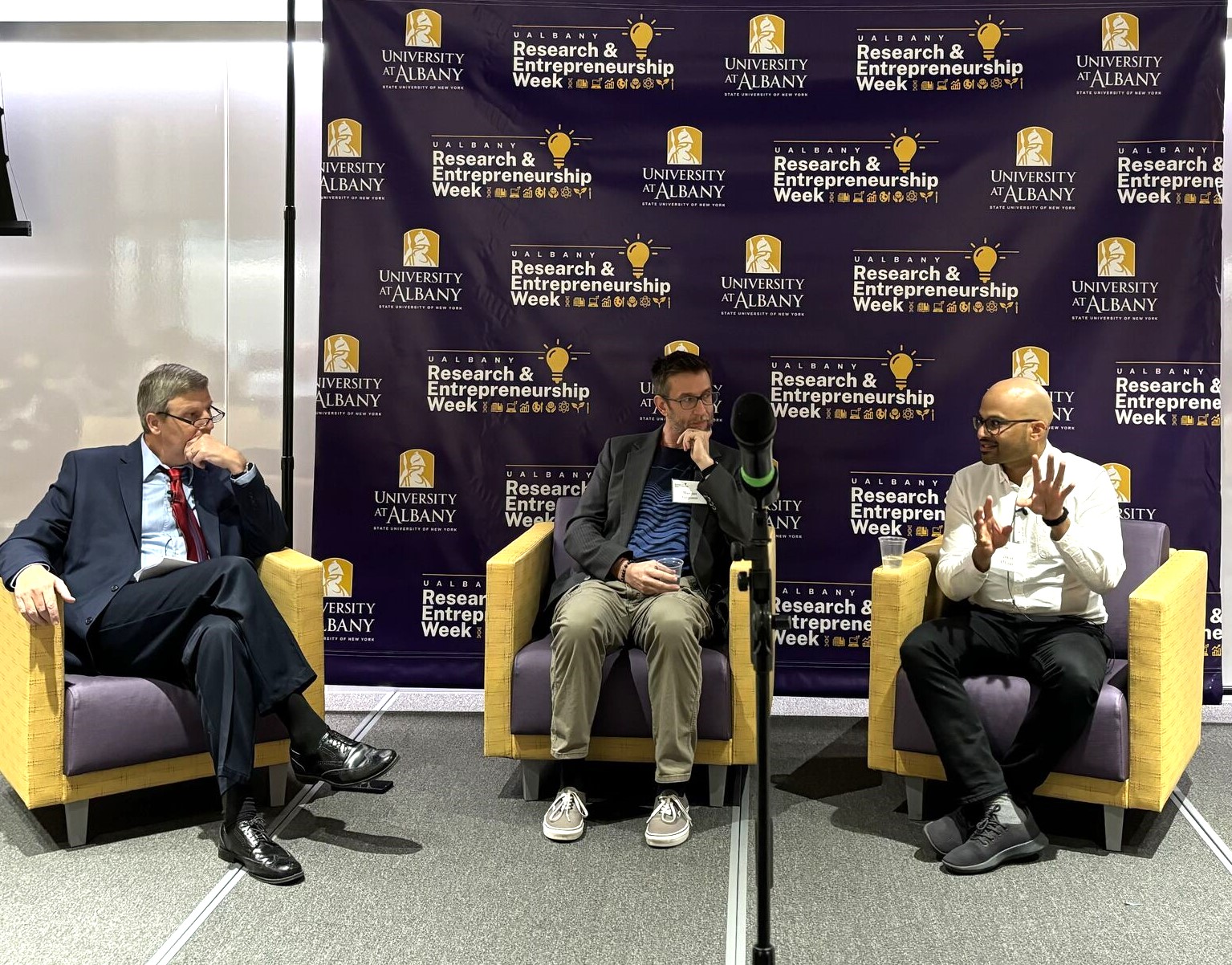 That undertaking is what Associate Professor of Philosophy, Jason D’Cruz at the University at Albany is doing. With his team of computer scientists, cognitive scientists, psychologists, and qualitative researchers, they are developing an assessment for the foundations of trustworthiness in AI-driven systems. They incorporate ethical theory, moral psychology, practical rationality, decision theory, social epistemology, which looks at how a person perceives the truth, and computer science, to examine trust, empathy, and equity in AI decision-making.
That undertaking is what Associate Professor of Philosophy, Jason D’Cruz at the University at Albany is doing. With his team of computer scientists, cognitive scientists, psychologists, and qualitative researchers, they are developing an assessment for the foundations of trustworthiness in AI-driven systems. They incorporate ethical theory, moral psychology, practical rationality, decision theory, social epistemology, which looks at how a person perceives the truth, and computer science, to examine trust, empathy, and equity in AI decision-making.
These are just a handful of the fourteen research projects that are underway. Below is the complete list of SUNY Faculty and IBM partnership explorations.
As these researchers are deep into problem solving, one thing stands out to all – IBM is the right partner in this discovery process, and it is a partnership that is truly shaping the future of AI.
“Such complementary strengths and focused interests of both the industry and academic institution will create a synergistic effect on R&D efforts, essential for major advancements…” Junghyun Cho, Professor in Mechanical Engineering, Binghamton University and 2024 SUNY-IBM Alliance grant recipient.
The Alliance is under the joint leadership of SUNY Senior Vice Chancellor for Research Shadi Sandvik and Mukesh Khare, IBM Vice President and General Manager of IBM Semiconductor. The full SUNY press release is available here.
Binghamton University
- Junghyun Cho – Project Titled: Mechanistic Understanding of the Cu/Oxide Hybrid Bonding
- Kanad Ghose – Project Titled: Design-Space Exploration Tool Suite for Heterogeneously-Integrated AI Systems
- Zimo Wang – Project Titled: Advanced smart sensing and analytics scheme for rapid incipient anomaly diagnosis, reliability study, and causality analysis for underfill warpage of flip-chip packaging processes
- Kaiyan Yu – Project Titled: Ray-based Functional Regression with Federated Learning (Ray-F2R-FL)
Stony Brook University
- Niranjan Balasubramanian – Project Titled: Low-Cost and Energy-Efficient Distributed Training of Large Language Models
- Mike Ferdman – Project Titled: RISC-V AI Accelerator for Foundation Models
- Erez Zadok – Project Titled: Multi-cloud Hybrid GPU Clusters for AI Workloads
University at Albany
- Nate Cady – Project Titled: Resistive Random Access Memory (RRAM) for AI Applications
- Jason D’Cruz – Project Titled: Trustworthy-AI from a User Perspective
- Kathleen Dunn – Project Titled: Strengthening hybrid bonding through understanding of orbital exchange
- Penghang Yin – Project Titled: Quantization and Compression of Large AI Models
University at Buffalo
- Tevfik Kosar – Project Titled: GreenAICode: Sustainable AI Model Development through Energy-aware Code Refactoring
- Baishakhi Mazumder – Project Titled: Enhancing conductance and reliability through atomistic investigation and optimization of hybrid bonding
- Jinjun Xiong – Project Titled: Physics-informed Graph Neural Networks and Novel Graph Representation for Chiplet-based Physical Design Synthesis Closure


